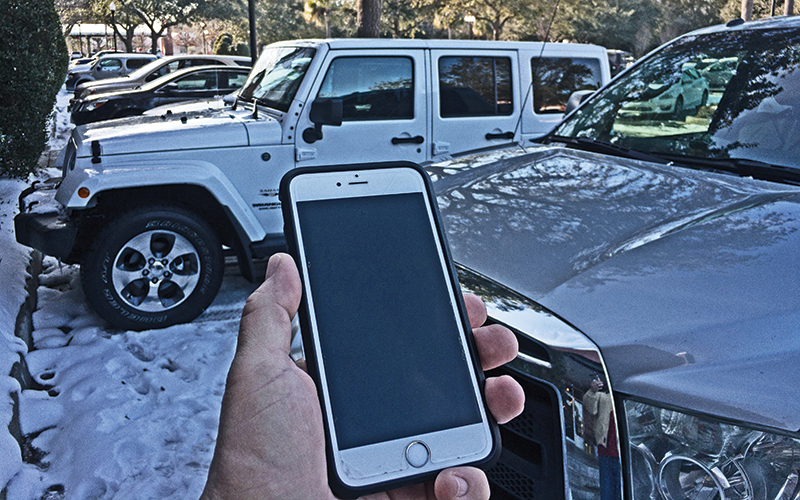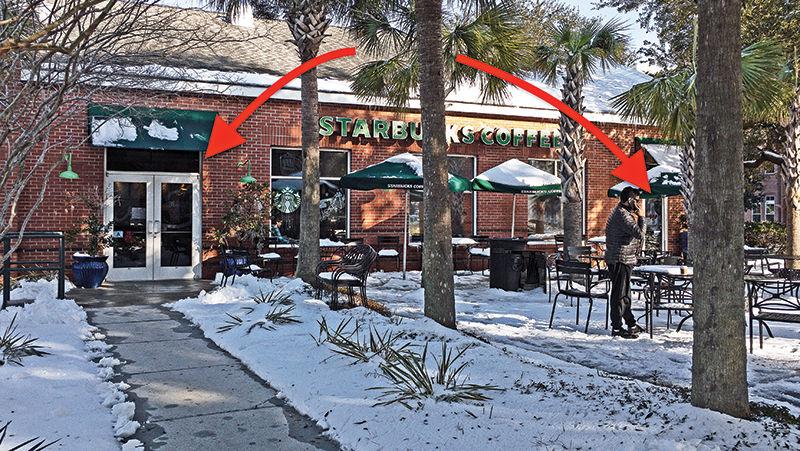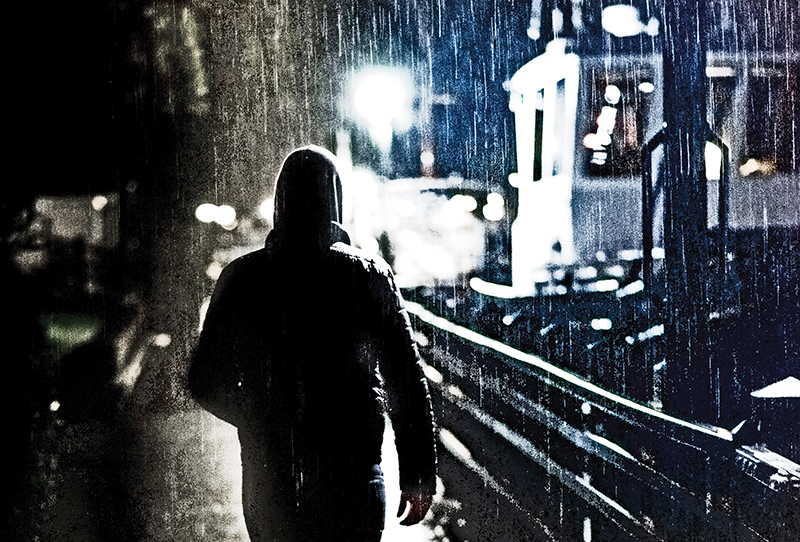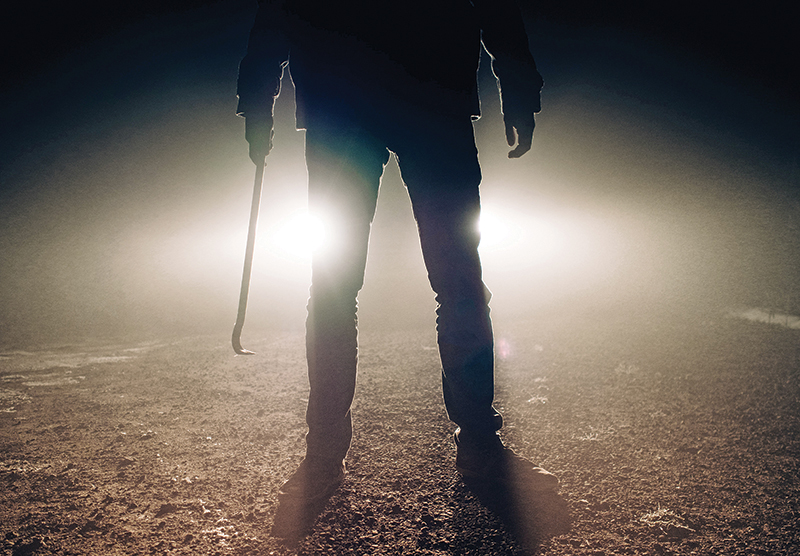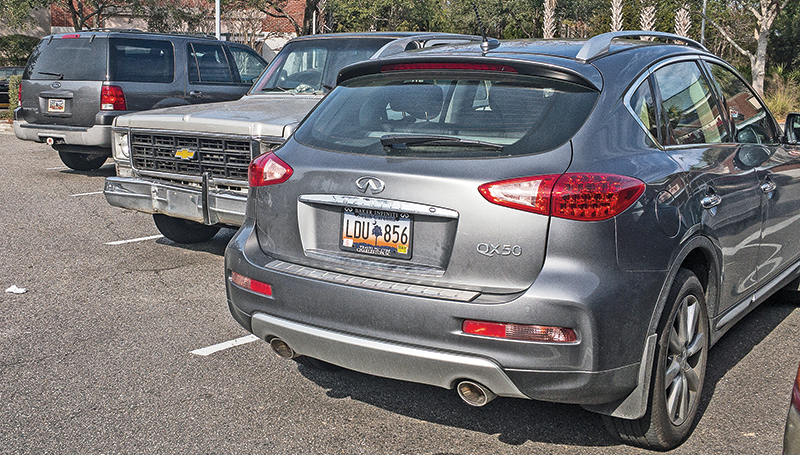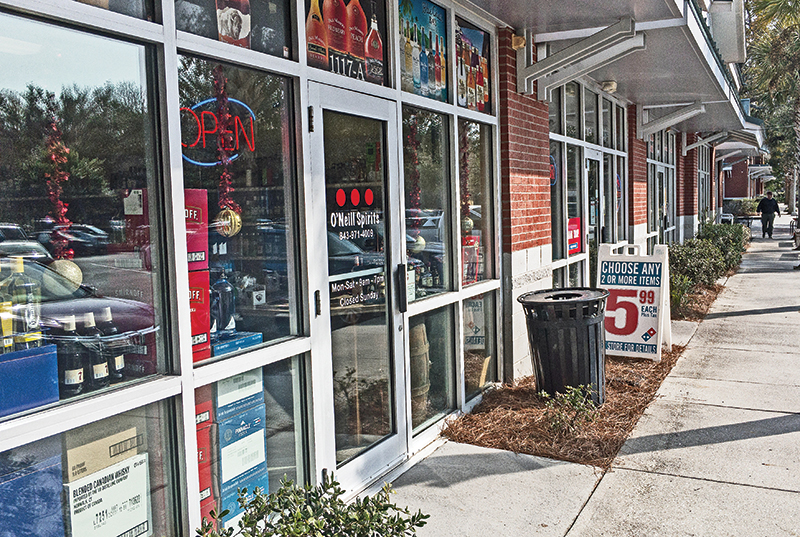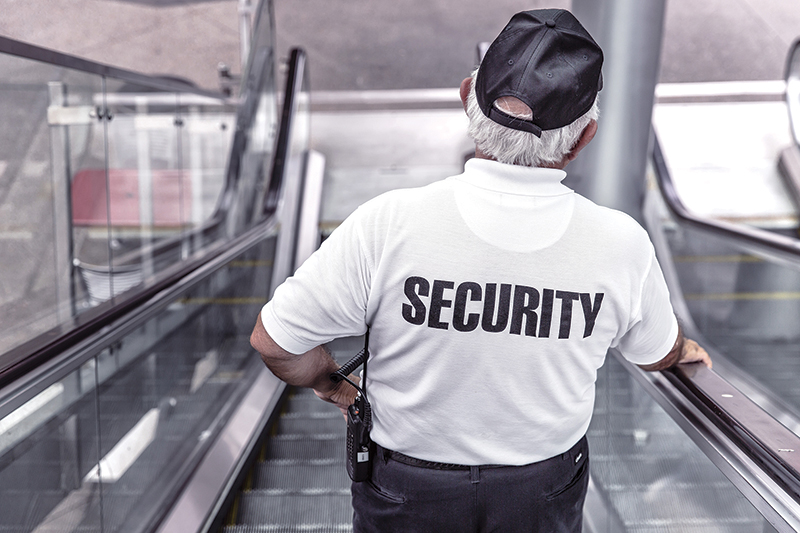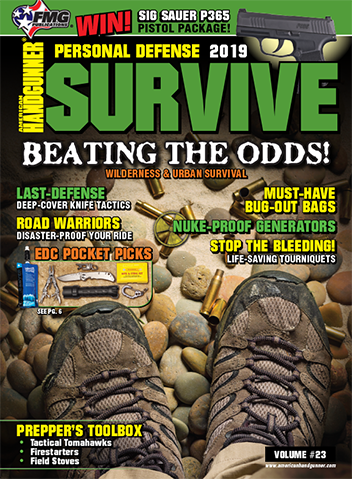5
Top 10 Tips For Urban Survival
Increasing Your Situational Awareness

GET THE FIRST LOOK!
Get a First Look at new products! PLUS ... Get American Handgunner's GIANT SURVIVE Special Edition here. Inside are plenty of ideas to keep you safe during pandemic management. Get this FREE 148-page Personal Defense resource NOW! Click the "Get Link" button below. Then check your e-mail for a download link from [email protected]. If a note is not in your inbox, be sure to look in your spam or junk folder.
The article below is included in American Handgunner’s SURVIVE Special Edition.
Read it now and be sure to share these tips with family and friends!

Some people are naturally observant. I’m not one of them. My wife can sprint through a crowded airport on a holiday weekend wearing noise-canceling headphones and then proceed to describe everyone there, who has middle seats on their next flight and which of their kids are taking violin lessons. On the other hand, I could trip over Jabba the Hut playing “I Am the Walrus” on a set of kettledrums and not notice.
What’s the moral of the story? I have to work at situational awareness. No, I mean it. I deliberately have to “switch on” when I’m out and about or the world will pass me by while I remain blissfully unaware. As a result, I’ve had to learn and develop some techniques and hacks to help me spot potentially dangerous anomalies and lifesaving opportunities during my daily travels. Maybe some of these strategies will help you too.
Check Your Phone
I carry my cell phone in a shirt or pants pocket. On a whim, I timed how long it takes me to retrieve my phone, unlock it with my fingerprint and check an incoming text message. It was about seven seconds (your mileage may vary). That doesn’t sound like much does it?
Here’s the thing. A lot can happen in seven seconds. An attacker can cover about 150 feet at a fairly leisurely pace. This is half of a football field. A car going 70 mph will cover a distance of over 700 feet. If you’re standing at a Stop-N-Rob counter, a person can “appear” at the counter with a gun from outside the building during a quick text message check.
To compound the risk, consider few of us stop at the seven-second text message peek. We’ll respond or do something else and before you know it a couple of seconds becomes 32, 61 or 94. For an enlightening — and maybe frightening — experience, time the duration of random folks checking their phones and see how much happens around them before they look up to rejoin the living.
Read Stuff … Lots of It …
I read this some time, somewhere and it’s turned out to be supremely helpful for a naturally oblivious person like me. The tip is simple. Read stuff. As you’re walking around, read every word you see. This might include street signs, bumper stickers on cars, advertisements, business signs, store windows, car manufacturer logos and even graffiti. Don’t read all this stuff with a goal of remembering it all. Read it to keep your brain and eyes engaged with your immediate surroundings. In the process of finding new and interesting things to read, like the fact Bugles are on sale, you’ll take in everything else going on around you. It probably doesn’t hurt potential evil-doers will take note you’re tuned in to your surroundings.
You’ll be amazed at how many new things you notice, even in areas you pass through every day. You also might be amazed at how much you remember. Even without making a deliberate effort you’ll probably be able to describe your exact location and surroundings in the event something happens to you or someone else nearby.
Count The Doors
Yeah, I know, everyone says to take note of the exits wherever you go. Despite my intentions, I’m not nearly as consistent as I’d like to be in this potentially lifesaving activity.
To force my brain into gear, when leaving a store or restaurant, I’ll quiz myself on the number of exits I found in addition to the one I used. Putting a number goal on the activity is another way to force my lethargic brain into action. If your spouse or significant other wants to participate, ask each other just after you leave a store
or restaurant.
Shop For Shoes
Another trick that keeps me from zoning out is to shop for peoples’ shoes. If I observe someone in public, and especially if they get my attention for some reason, I’ll glance down and check out their shoes. This keeps my eyes moving and just might provide some useful information. Not only are shoes a tougher wardrobe item to change if someone is trying to quickly alter their appearance, they also tend to be unique for
descriptive purposes.
Additionally, one’s choice of shoe type and style might prompt you to raise or lower your initial threat assessment. We had a guy visit our church recently who was giving off some odd signals. He was awkward, alone and carrying a backpack. He was also wearing flip-flops. It’s certainly possible someone with evil intentions will wear flip-flops, but it’s a terrible wardrobe choice if they anticipate any physical activity like running. In this case, it was a signal in the opposite direction. He was just a lonely guy looking for some help.
Spot The Armed Citizen
There are 15 million people, give or take, who have some sort of concealed carry permit. This doesn’t include those in states where no permit is required. This means the odds are pretty good you’ll be mingling in public with other concealed carriers. Of course, those numbers don’t include all those who are carrying concealed with less noble intentions.
Making a proactive effort to note whether people are carrying or not is a great way to stay switched on. There are all sorts of cues to look for. You can try to spot the IWB pants or shirt bulge, especially when someone leans forward. You can spot belt clips. While you’re checking out shoes, see if they favor one leg or have a weird pant-leg profile from an ankle holster. Watching hands can be a great clue as well. Is someone fidgeting around their waistline checking gun security? Are they constantly playing with their shirt tail?
Spotting guns is not only a great way to keep your brain in “observe your surroundings mode,” but it just might clue you into someone carrying a gun who shouldn’t be.
Ignore People
This tip may sound a little counter-intuitive, but it makes sense when you think about it. When you try to focus on being observant, what’s the natural response? It’s to suck in every detail of all the people and things within a 12-mile radius like a giant Hoover vacuum while committing every element to memory. Unless you’re Stephen Hawking, it won’t work. It’s just too much information to process, and you’ll be reduced to writing REDRUM on Motel 6 walls in short order.
A more realistic strategy is to focus on the anomalies or those people outside of the environmental pattern. To do this, you need to filter through the rest of nearby folks and discard or ignore them. If you walk into a convenience store and see an adult holding a gallon of milk while dragging a 3-year-old away from the candy counter, they are two people you can probably delete from your observing and tracking radar. Rather than worrying about noting and remembering their physical descriptions, perhaps focus on the guy in a trench coat fidgeting off to the side. The more familiar you are with your local environment, the easier it will be to observe, process and then ignore people who fit within the normal pattern.
When you think about it, the observe, process and discard approach makes mathematical sense. Unless you live in Mogadishu or Baltimore, 99 percent of the people you encounter every day mean you no harm.
Don’t Ignore People
Yeah, I know I just finished telling you to ignore people, but now I’m talking about the remaining ones you chose not to ignore. Perhaps they don’t quite fit the pattern of the current environment. Or maybe they’re looking at you funny, acting suspicious or wearing a University of South Carolina football jersey. Whatever the cause for keeping them on your watch list, it helps to look for specific cues.
Developed to help active military spot impending trouble, the Left of Bang course delves into the science of making snap decisions with good outcomes. Fortunately for you, the course material is documented in a book of the same name. The text is chock-full of valuable takeaways, but a big one is this: Learn what to look for then apply your situational awareness tools to spot those cues. Let’s consider some examples.
Much of the combat profiling theory in Left of Bang relies on the truth all of us humans, good ones and bad ones, share similar physiological responses and emotions that can drive those responses. One such human trait is our relatively poor ability to multitask. Sure, we may claim to do it well, but we’re hardwired the opposite way. If you’re keeping an eye on someone who happens to be engaged in some innocuous activity solely for disguise, they’re not going to be able to act out the activity naturally. If someone is pretending to read their phone or a newspaper but is really there to scope out a robbery, their “reading” won’t look smooth. You may notice this person flicks their eyes to and away from their phone or paper.
You also might pay attention to behavioral anomalies. Someone wound up to commit a crime may show signs of stress like rapid blinking, foot tapping, increased swallowing rate or using their hands to pat or touch areas where a weapon might be hidden. On the other hand, someone about to attack might blink very little as they focus on their target. In either case, blinking may be outside of normal bounds. Human behavioral cue observation is a big topic, so get the book. It’s a great read.
Trust Intuition
The word masters over at Webster’s define intuition as “direct perception of truth, fact, etc., independent of any reasoning process.” The formal definition goes on to include “keen and quick insight.” I’m not going to argue with the folks who write dictionaries, but the technical definition doesn’t include factors that influence what drives the keen and quick insight of intuition.
Our intuition doesn’t come from The Force. The answers we get from it are at least partly based on our previous experiences and things we’ve learned in the past. For example, we all know if we hear a noise in an abandoned and dark building, we know better than to walk backward into the scary room without calling for help first. This isn’t intuition, it’s knowledge based on years of experience and learning from watching B horror movies. Yes, when we looked and saw nothing but dark shadows while hearing creepy music, we just knew Michael Myers was hiding in there. It seems like the magic of intuition, but it’s really a snap judgment based on past experience.
Seriously though, far too many people who are witness to or victim of an attack relay afterward they “knew something was off.” Not having had the benefit — if you want to call it such — of numerous past violent crime encounters, their intuition told them something was not right, but since they had no past experience of the results of such a feeling, their brain didn’t signal an “intuitive” command to run or fight. The moral of the story is simple. If something doesn’t feel right, it’s probably not a random and meaningless sensation. Your brain has associated visual, audio and other current sensory inputs with something you’ve experienced or learned in the past. Don’t ignore it.
The Fourth Dimension
No, the fourth dimension is not a warm-up band from Woodstock. Assuming I paid adequate attention to high school physics, the fourth dimension to our environment is time. Even though a mugger or terrorist is unlikely to use time travel to make a grand entrance, being aware of time and the passage of it is a big part of overall situational awareness.
Sure, my phone tells me the time. But I find if I wear a watch, I’m more continuously aware of what time it is and more importantly, how much time passes between things I observe. Besides, watches are cool.
Don’t Be Paranoid
While tips like these could certainly be carried to an extreme, thereby frightening your neighbors and their cat, you don’t have to constantly look over your shoulder for an impending UFO strike. It’s entirely possible, and advisable, to increase your level of awareness without spoiling the joy of life. Small steps like walking city streets without your nose smudging your smartphone screen aren’t going to negatively impact you — even if it hurts your all-time Candy Crush score. In fact, you just might find paying more attention to the world around you enhances your daily world experience. Remember, the vast majority of people you encounter aren’t out to harm you. So pay attention, but keep things
in perspective.
It’s easy to invest in guns, ammo and gear, but perhaps the best personal protection investment you can make is to develop some strategies to better track your surroundings. Remember, you will definitely win 100 percent of the encounters you avoid. This is a crime statistic I can live with.
Get more helpful survival information in the Personal Defense Survive special edition.
Click Here to order the print edition while supplies last!

